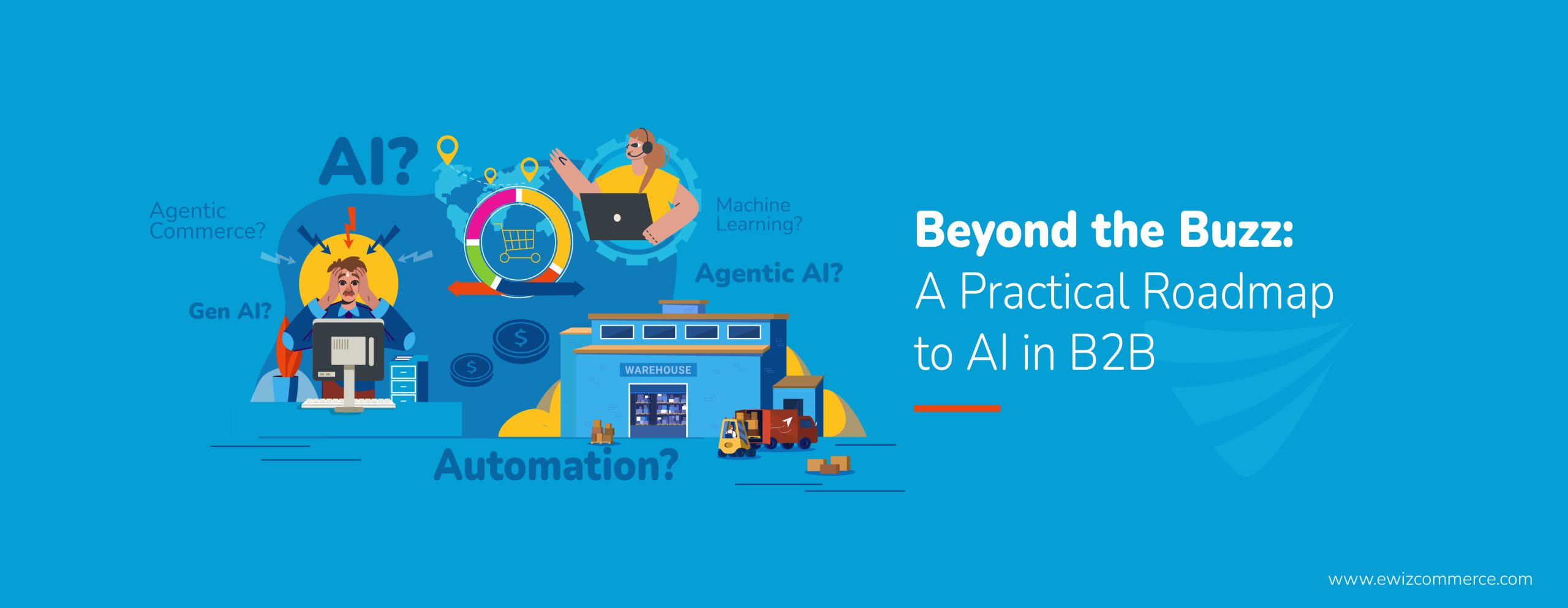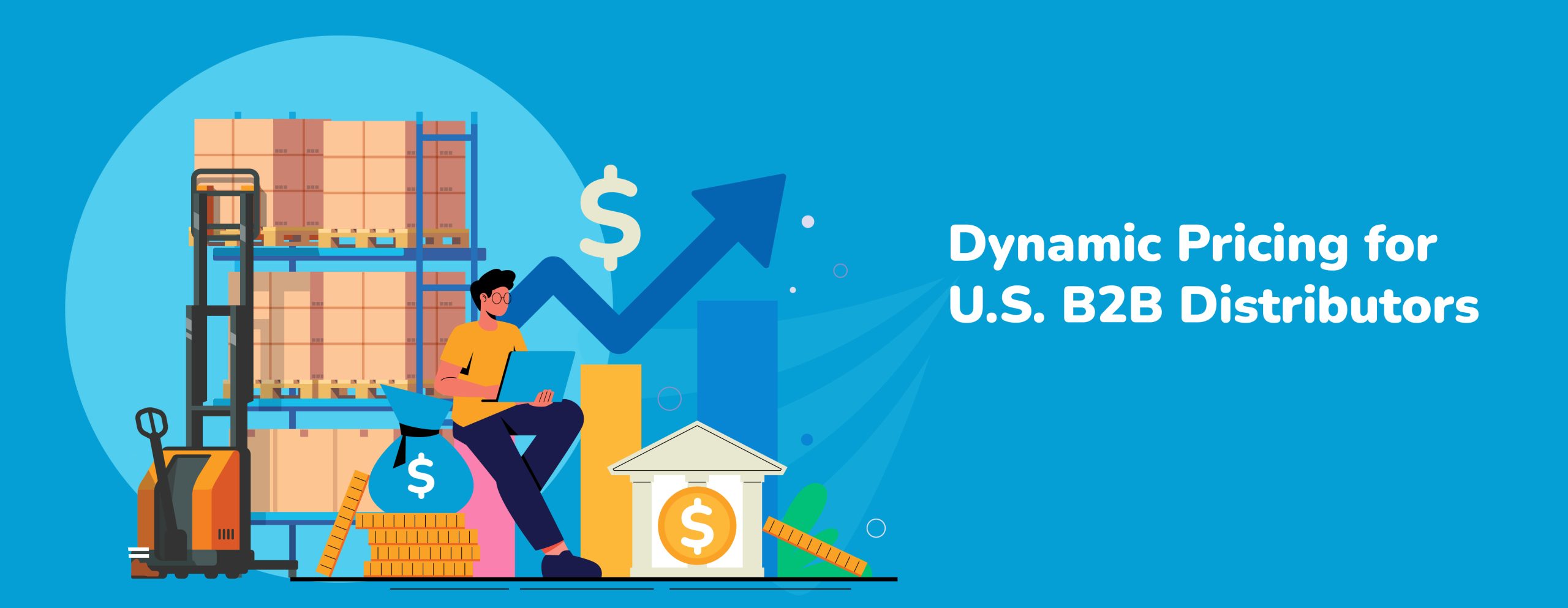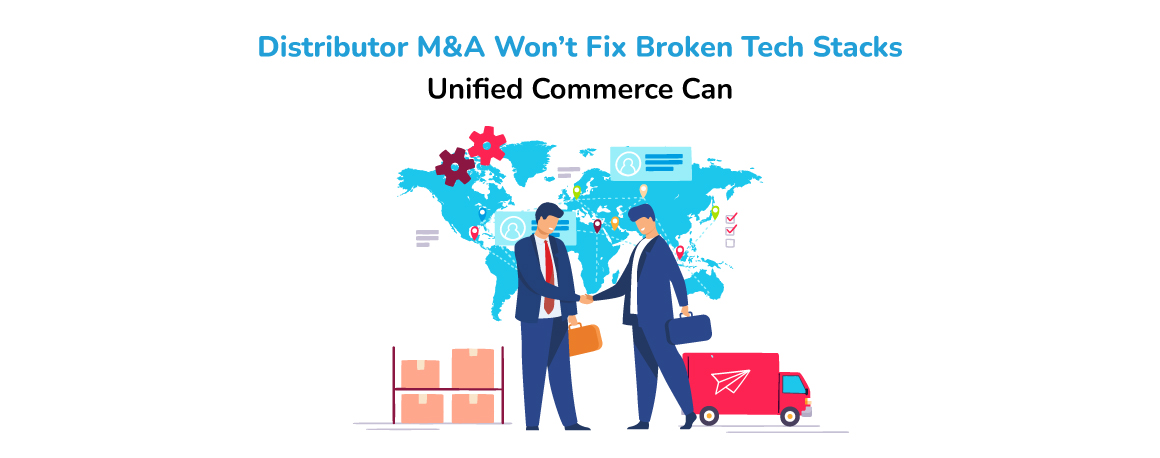B2B eCommerce
-
AI Chatbots, AI in eCommerce, AI in Marketing, AI in Sales, B2B eCommerce, B2B Marketing, B2B Sales, industries, UncategorizedNovember 4, 2025Beyond the Buzz: A Practical Roadmap to AI in B2B
Artificial intelligence (AI) has become the centerpiece of nearly every business conversation today. From optimizing supply chains to enhancing customer engagement, AI is being hailed as the next great enabler of operational efficiency. Yet, behind the buzz, many mid-market manufacturers...
By Harsha Udupa -
AI Chatbots, AI in eCommerce, AI in Marketing, AI in Sales, B2B eCommerce, B2B eCommerce platform, B2B Marketing, Ecommerce, ERP, UncategorizedOctober 27, 2025Dynamic Pricing for U.S. B2B Distributors: Managing Tariff-Driven Volatility
Since the beginning of 2025, tariffs have become part of the daily operating environment for US businesses. The Manufacturing PMI (Purchasing Manager’s Index), which tracks production, new orders, employment, supplier deliveries, and inventories, stood at 48.7 in August 2025, indicating...
By Harsha Udupa 1 SHARE -
APIs and integrations, B2B eCommerce, B2B eCommerce platform, B2B Marketing, Enterprise Resource Planning, ERP, Industry Solutions, UncategorizedOctober 14, 2025From Risk to Resilience: Digital Moves to Protect Distributor Relationships
Distributor relationships are the backbone of B2B commerce. Whether you’re moving industrial machinery, electrical components, consumer goods, or spare parts, your entire business depends on these partnerships working seamlessly. Yet, these relationships are more fragile than most businesses admit. One...
By Harsha Udupa -
All Blogs, APIs and integrations, B2B eCommerce, B2B eCommerce platform, Ecommerce, Enterprise Resource Planning, ERP, Industry Solutions, Manufacturing, omnichannel, Order Management, Product Catalog, Sales, Sales Enablement, Supply ChainSeptember 29, 2025Distributor M&A Won’t Fix Broken Tech Stacks; Unified Commerce Can
Distributor consolidation is accelerating. In just the past few months: GME Supply acquired a Houston-based workwear and PPE supplier to expand its safety portfolio. SupplyOne bought a California packaging distributor, signaling the continued roll-up in packaging and industrial supplies. EVI...
By Harsha Udupa -
May 2, 2025B2B eCommerce Trends Mid-2025: What’s Changed and What’s Coming
We’re already halfway through 2025, and it’s clearer than ever: B2B eCommerce is fundamentally reshaping how manufacturers and distributors operate. Straddling several moving parts at a time—geopolitical issues, tariff pressures, and shifting customer expectations—manufacturers and distributors are looking at the...
By Harsha Udupa -
AI in eCommerce, AI in Marketing, B2B eCommerce, B2B eCommerce platform, Ecommerce, eCommerce Personalization, Industry Solutions, Inventory Planning, Manufacturing, omnichannel, Order Management, Product Catalog, SalesMarch 10, 2025B2B eCommerce Product Catalog Management: Proven Strategies for Efficiency & Growth
Traditional printed catalogs defined commerce for over a hundred years. With advancing technology, businesses going online, and the internet-savvy generation becoming part of the workforce, catalogs have moved beyond being an online product list, especially in B2B eCommerce. A B2B...
By Harsha Udupa -
February 24, 2025Understanding the Modern B2B Buying Process: Key Players, Phases, and Tips
B2B sales and purchases today are driven as much by online platforms and digital tools as they are through traditional methods like trade shows and in-person negotiations. Business buyers conduct independent research, compare suppliers online, and expect seamless digital interactions. ...
-
All Blogs, B2B eCommerce, B2B eCommerce platform, Enterprise Resource Planning, Industry Solutions, Manufacturing, Supply ChainFebruary 13, 2025B2B eCommerce ERP Integration: What it is and Why it Matters for your Business
Every manufacturer and distributor knows that Enterprise Resource Planning (ERP) systems serve as the nerve centers of their operations. From inventory and finance to procurement and customer contracts, ERP centralizes critical business functions, ensuring teams across departments work with real-time...
By Harsha Udupa 2 SHARES -
All Blogs, B2B eCommerce, B2B eCommerce platform, B2B Marketing, Ecommerce, Enterprise Resource Planning, omnichannel, Order Management, Product Catalog, Supply ChainFebruary 4, 2025Unlocking Efficiency: eCommerce’s Role in Modern B2B Supply Chain Management
Efficient supply chain management (SCM) is a formidable task that requires constant adaptions on different fronts, including changing market dynamics, supplier-partner relationships, logistics and distribution, consumer behavior shifts, and regulatory compliance. Throw B2B eCommerce into the supply chain mix and...
By Harsha Udupa -
AI Chatbots, AI in eCommerce, AI in Marketing, B2B eCommerce, B2B eCommerce platform, Ecommerce, eCommerce Personalization, Mobile Commerce, Platform Comparisons, Product CatalogJanuary 3, 2025Top 10 B2B Enterprise eCommerce Platforms to Power your Business in 2025
The demand for tailored eCommerce solutions in the B2B sector has never been higher. Unlike B2C customers who shop for personal gratification, B2B buyers approach eCommerce with a mission-critical mindset. Their purchases are driven by the need to execute tasks...
By Harsha Udupa









